Charger UltraFire WF-188
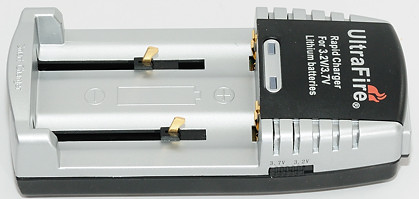
This charger is a multi LiIon chemistry charger that supports a wide variety of LiIon sizes.
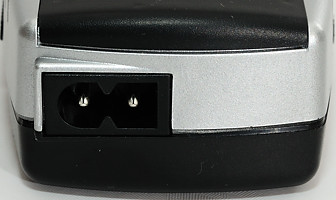
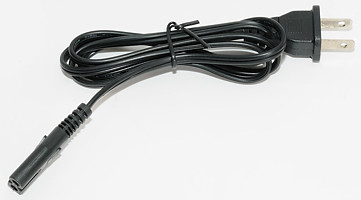
The charger is powered from the mains and is universal voltage (100-240 VAC 50/60 Hz), the version I bought was supplied with an American mains plug.

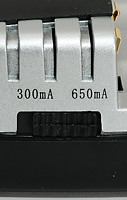
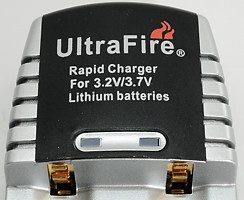
There are switches to select chemistry (3.7 or 3.2 volt) and charger current (300 or 650 mA) and a led for each channel. The switches have a click and enough movement to distinctly mark position. The charger has a led for each channel, it will be red when charging, green otherwise.


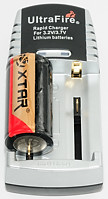
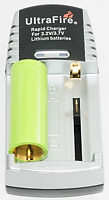
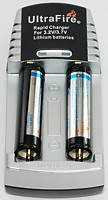

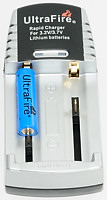
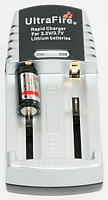
The charger can easily handle 70 mm long batteries and up to D cells in diameter (32 mm), with both flat and button tops cells. But the slider that is connection to the battery minus pole does not slide easy enough, it will easily lock up and give a bad connection. Using a tool to secure it is pushing against the battery is a very good idea.
Measurements
Below 2.4 volt the charger is charging with 15-22 uA.
Between 2.4 volt and 4.2 volt the charger is applying regular charge current (See curve below).
When the battery goes above 4.2 volt the current is turned off (below 3uA current).
The charger will not restart charging before the battery has been removed.
When charger is disconnected from power, but with a battery in, it will draw below 300uA from the battery.
More batteries will not change the charge current.
Because each channel is independent, the current varies between the channels.
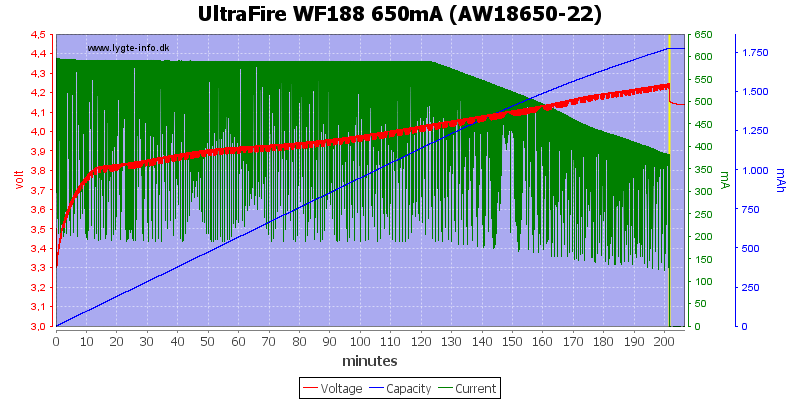
The 650 mA setting is a bit below 600 mA and drops when the battery is near full charge. This is not a CC/CV charge profile.

The second channel has 600 mA in charge current and starts reducing the current earlier. The total charger time is nearly the same (3 hour, 24 minutes)
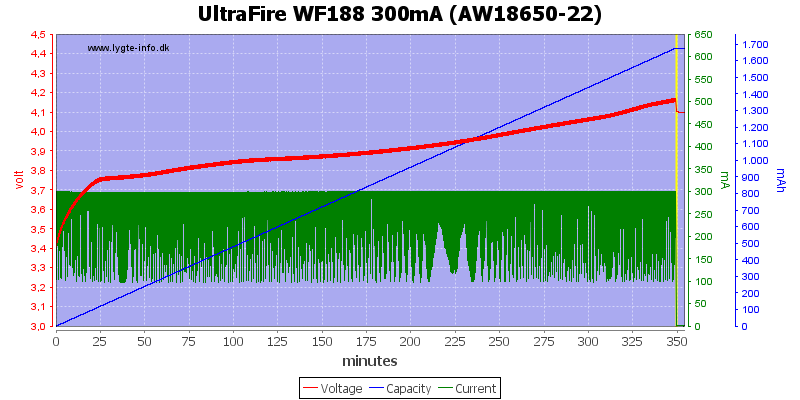
Reducing the charge current to 300 mA increases the charge time to 5 hour 50 minutes. The charger keeps the current constant during the charge, but the final cell voltage is lower than above.
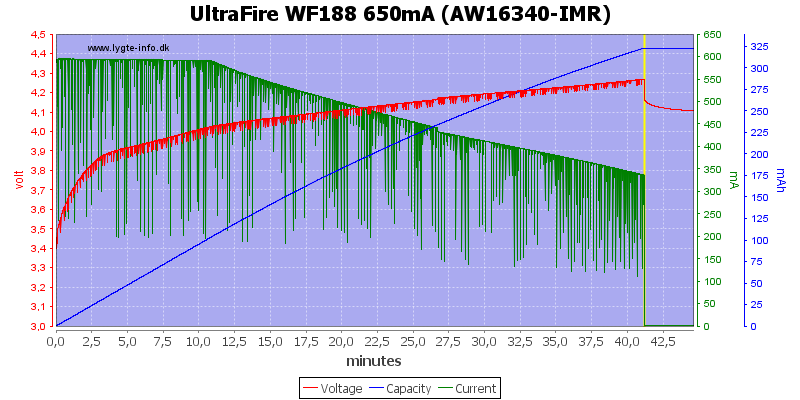
My old IMR cell has a large voltage drop when current is turned off (This is as expected).
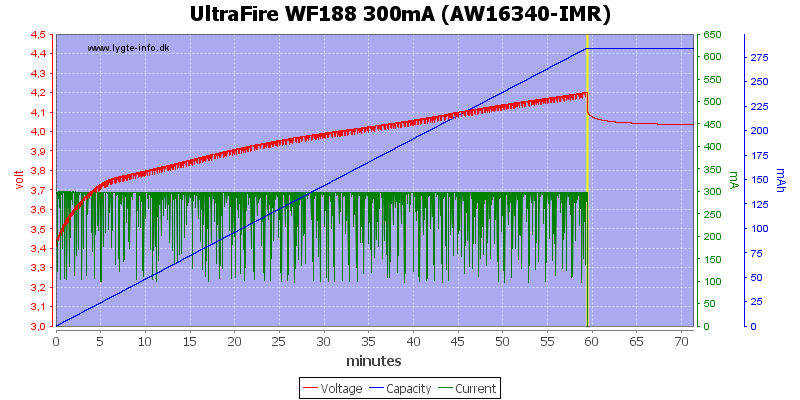
Again the 300 mA setting has a lower final voltage than the 650 mA setting (This is strange).
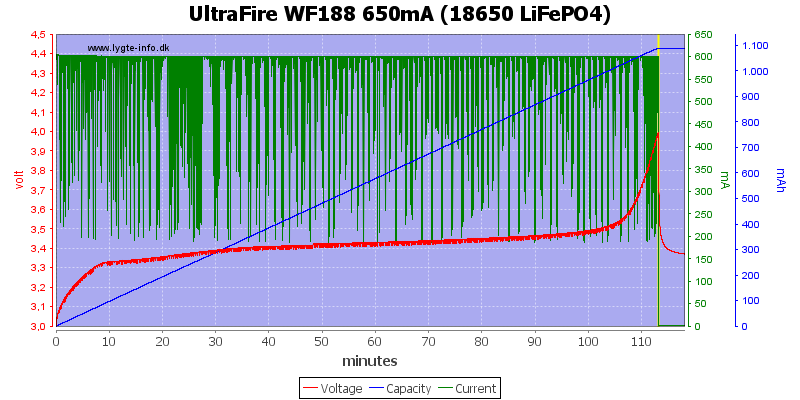
Charging a LiFePO4 on the 650mA setting works fine. The fast rise in voltage when the cell is nearly full is due to the LiFePO4 chemistry.
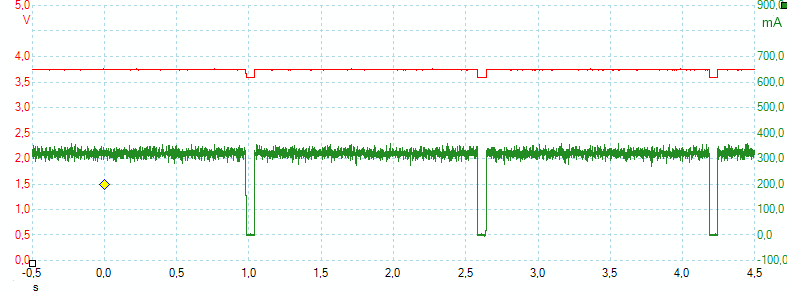
All the noise on the curves above is because the charger turns off the current each 1.5 second to check the voltage. This makes it possible to measure the actual cell voltage, ignoring any resistance both in the battery and in the connections.
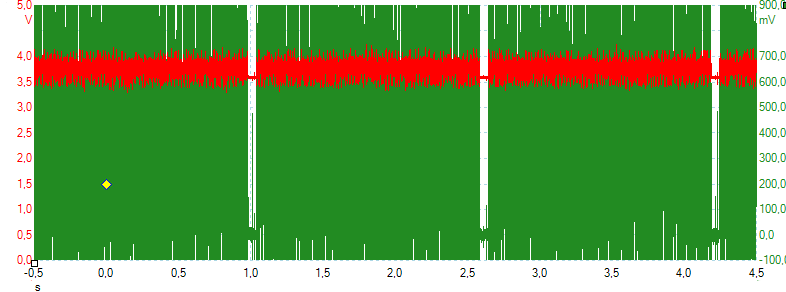
But there might be another reason for this pulsing, the charging circuit does make a lot of electric noise. This curve is exactly the same as above, but without applying any filtering.

Zooming in on the noise (Expanding the time scale 100000 times), show the actual noise pulses that makes the noise. These curves are for 300 mA charge current, 600 mA does look the same way.
Conclusion
The charger does not follow the recommended charge procedure for LiIon batteries, but it does charge to 4.2 volt and then turns off. It is dual channel and can do many battery sizes, the charge time is reasonable for 18650 batteries.
I believe that it is a useable charger, but watch out for the slider connection.
Notes
Here is an explanation on how I did the above charge curves: How do I test a charger






















